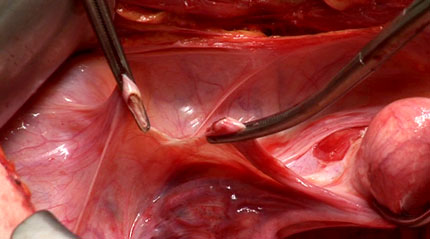The genre of medical blogs grows incessantly, and it’s difficult to keep up with all exciting new quality start-ups. So I have to restrict mention to those that may have some medical museum relevance.
Yesterday I fell over The Sterile Eye: Life, death and surgery through a lens, edited by medical videographer Øystein Horgmo at the Norwegian National Hospital (Rikshospitalet) in Oslo, who makes clinical videos of medical and surgical procedures. For the last three years he has documented cancer diagnostics and treatment; he’s currently working on sarcomas, skin cancer and melanoma, and will continue with tumors of the liver, pancreas and other endocrine organs later this year. He has just told me that much of this material is available on the net (here)—a fine repository of clinical videos which I suppose can be used (with permission) in both physical and digital museum exhibitions (so far only in Norwegian, but an English version is underway).
Øystein Horgmo says he started The Sterile Eye in November last year because he wanted to share his experiences of videofilming diagnostic and surgical procedures to a larger public: “Being present when people are at their most vulnerable, like at the CT for detecting cancer or when in deep narcosis during surgery, is a special and strange priviliege”.
I particularly like this blog because this is not just the usual recycling of stuff from other websites, but original observations based on his professional experience as a clinical photographer and comments on the genre of medical videography.
For example, I’ve never thought of the problems involved in rendering shades of red on video. Because of the ubiquitous presence of blood throughout our body, most organs and tissues are coloured in different shades of red:

(round ligament; ligamentum rotundum; credit: ‘Different shades of red’)
When filming operation procedures for clinical instruction purposes it is therefore crucial that the video system can reproduce the colours accurately. The popular HDV video format cannot reproduce the different shades of red satisfactory, so Øystein Horgmo shoots his videos on the so called DVCPro50 format instead (technical explanation here).
A great medical blog for anyone with an interest in the history of contemporary medicine, medical science studies or medical museology. I’ll add it to my RSS feeder immediately.
‘The Sterile Eye’: Cancer diagnostics and therapy on video display
The genre of medical blogs grows incessantly, and it’s difficult to keep up with all exciting new quality start-ups. So I have to restrict mention to those that may have some medical museum relevance. Yesterday I fell over The Sterile Eye: Life, death and surgery through a lens, edited by medical videographer Øystein Horgmo at the Norwegian National […]


